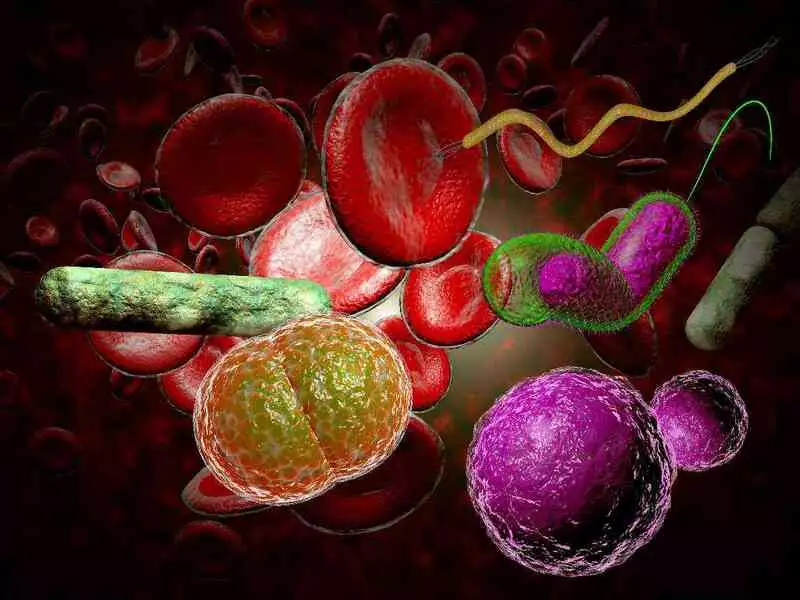Healthy skin protects our body against various microorganisms. The basic element of this protection is the epidermis, especially the stratum corneum and the lipid coat on its surface. Additional defence against pathogenic microorganisms is provided by specific and non-specific immune mechanisms. Also, the acid reaction on the skin surface (pH 5.4 - 5.9) favours relatively less harmful bacteria and protects against pathogenic strains.
Purging(furunculosis)
Numerous recurrent boils occurring more frequently in immunocompromised individuals, those with atopic dermatitis and carriers of S. aureus in the nose or perineum. Boils are most commonly localised to the face, neck and armpits.
Treatment is aimed at reducing S. aureus carriage. For example, clindamycin or dicloxacillin are used. Sometimes the addition of topical treatment - mupirocin cream to the nostrils - is effective.
Multiple boils(carbunculus)
This is the most serious form of boil, with confluence of lesions and significant inflammation. The most common location is the neck and trunk. Most patients have general symptoms.
Hospitalisation and intravenous antibiotics are indicated.
 Staphylococcal and streptococcal infection, photo: panthermedia
Staphylococcal and streptococcal infection, photo: panthermedia
Staphylococcal infection
Multipleabscesses of infants (abscessus multiplices infantum)
This is a staphylococcal infection, mainly of the exiting parts of the sweat glands. In the course of the disease, numerous swollen inflammatory nodules develop, which then become punctured with the secretion of purulent contents. The lesions are most commonly located on the back and buttocks. The disease usually affects neglected, malnourished infants with weakened immunity.
Disinfecting baths with potassium permanganate, sometimes surgical debridement of purulent nodules, and topical antibiotic solutions are necessary.
Nail fold infections
Ankylosis(paronychia) is an inflammation or infection of the nail fold. The most common cause of acute zanoccosis is S. aureus, whilechronic lesions are usually caused by Candida albicans infection. Paronychia usually affects the cuticle or lateral nail folds usually previously damaged. Swelling and erythema appear on the nail folds and pus may ooze. The lesions should be differentiated from other infections: herpes virus, dermatophytes or C. albicans. Local disinfectant treatment is usually sufficient.
Staphylococcalbulla repens
This is a blistering staphylococcal infection located on the periphery of the nail. The blister is covered by a thick stratum corneum and filled most often with serous fluid, less often with pus.
Treatment: superficial incision and drainage and systemic treatment with staphylococcal antibiotics are required.









